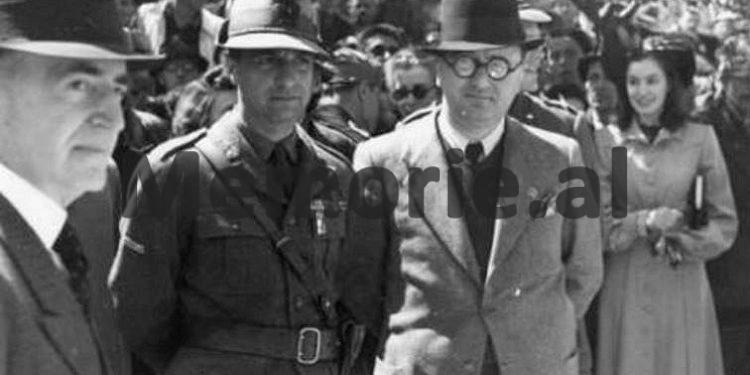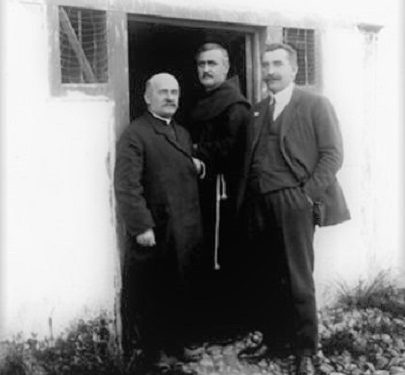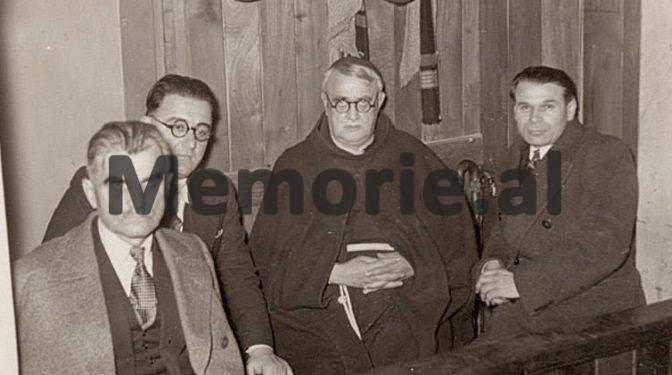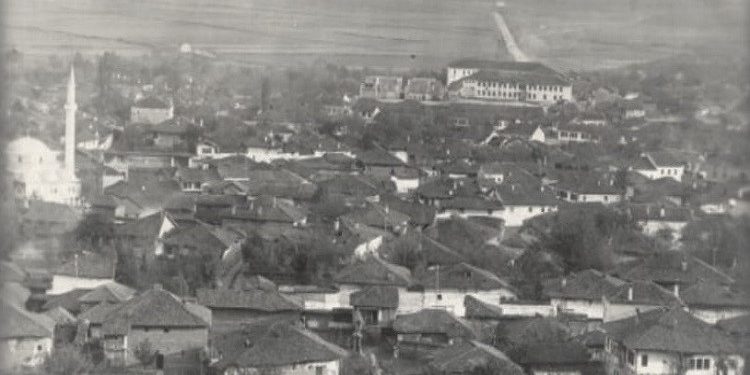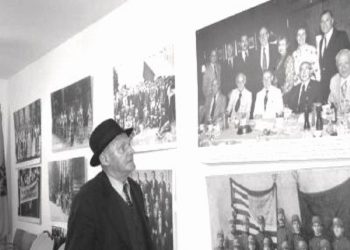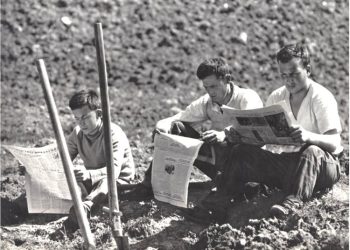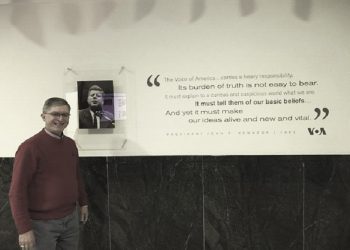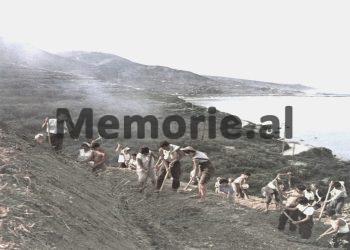By Sadik Elshani
Memorie.al / with the unjust decision of the Conference of Ambassadors in London in 1913, more than half of the Albanian lands and population remained outside the borders of the independent Albanian state. Kosovo and the Albanian lands in Macedonia and Sanjak were given to Serbia, the rest to Montenegro, while Chameria was given to Greece. For the Albanians, the Serbian regime was much more brutal than the Turkish one. In the period between the two world wars (1918 – 1941), the Albanians in the so-called Kingdom of Serbs, Croats and Slovenes were experiencing an unbearable, brutal and inhuman oppression. In the memory of Kosovo Albanians, this period is known as the “Time of Serbia”.
Violence had become a daily, inseparable part of Albanian life. Violence was exercised in all physical and spiritual ways, only to make the life of the Albanians as miserable as possible and to force them to leave their lands and move to Turkey, while instead of them to bring Serbian and Montenegrin settlers. The infamous plan, the “Memorandum” of the equally infamous academic, Vasa Čubrillović, was being meticulously implemented.
There were no schools in the Albanian language, the Albanian language was forbidden in public life and in the administration. In the few schools that the Yugoslav government had opened, Albanian students learned in the Serbo-Croatian language: they learned about Serbian literature, culture, history – they were learning about Mark Kralević, the Karagjorgjevics and the Pašićs, the exaggerated and false Serbian myths.
The main purpose of these schools was not the education of Albanians, but their alienation, assimilation, serbization. Through some Mejtepe, the Albanian language was taught illegally by the native Hoxhallars. Eager to be educated in their native language, many young Kosovans escaped from their native lands in Yugoslavia and came to Albania.
In almost all secondary schools in Albania, there were students from Kosovo and other Albanian territories, in the former Yugoslavia. The dormitory “Kosova” in Krumë, had turned into a warm home for students from Kosovo. Albanian patriots, despite the great danger, illegally brought Albanian books from Albania.
It still remains fresh in my memory, the confession of an elderly patriot, in a broadcast of Radio-Television of Prishtina, where he told how he had secretly brought books from Albania and for fear of any surprise control, he had not kept them at home , but had hidden them on the mountain, in a crack in the oak tree.
Despite these great sufferings, the Albanians did not give up, but made superhuman efforts to become masters of the country, preserving our manly language, customs and traditions, the Albanian being. The “time of Serbia” came to an end, Yugoslavia of the King capitulated and was occupied by Germany and Italy.
After 30 years under brutal Serbian rule, now Kosovo and other Albanian lands in the former Yugoslavia, joined the motherland, the Albanians were breathing a little easier. Albanian schools were opened, administration was established in the Albanian language, with Albanian officials, with Albanian prefects and sub-prefects. The Red and Black Flag was flying again!
Hundreds of patriotic teachers responded to the call of the Minister of Education, Ernest Koliqi, and voluntarily went to work in Kosovo and other Albanian territories in Macedonia and Montenegro. These were young teachers full of youthful energy, enthusiasm, teachers who had completed the “Normal” of Elbasan. They found Kosovo as they had envisioned it: Kreshnik, a fortress of manhood and bravery, cradle of Albanianism.
Although they were facing many problems and great difficulties, because they were schools that were opening for the first time, they worked with indescribable solitude, without stopping day and night. Children who were eager for knowledge learned, adults also learned, because at that time the population of Kosovo was over 90% illiterate. Even the people of Kosovo welcomed the teachers with brotherly love, respect and deep gratitude for their sacred mission.
These teachers became torchbearers of Albanian education in Kosovo. In the school year 1941-1942, 173 primary schools, 3 secondary schools and several lower gymnasiums were opened. While in November 1941, the Normal School was opened in Pristina. At the beginning, 80 teachers were engaged in this mission. Among these teachers there were also many young people from Kosovo who had been educated in Albania, but had not been able to return to Kosovo before.
This number later reached 264, while in the school year 1943-1944, this number increased to 400. In this school year, over 25,000 students attended classes. These schools are centers of knowledge and patriotism. Based on this, the students of Kosovo were learning our national history for the first time, they were learning about the Illyrians, Skënderbeu, the League of Prizren, Ismail Qemalin, etc.
They were learning the poems of Naim, Çajup, Father Gjergj Fishta, Dom Ndre Mjeda, Asdreni – poems that they sang with love to their homeland, the Albanian language, they sang hymns to Albania. In addition to the knowledge they were getting about Albanian language, literature, culture, history, they were also kneading with feelings of patriotism and our national pride.
For the first time they saw the flag, fluttering before their eyes, they sang the Anthem of the Flag, with great love they sang the patriotic songs: “For the Motherland”, “Dalëngadale po vijne behari”, etc. In addition to the dedicated work with the students, through various courses they also prepared the first Albanian teachers, who would later continue this mission.
After 1944, a part of these teachers left Kosovo, while the vast majority left in 1948, when Albanian-Yugoslav relations broke down. However, some stayed even after 1948 and spent their whole lives in Kosovo. Mehmet Gjevori (1910 – 2007), Tajar Hatipi (1918 – 1977) and many others, saw it necessary to stay in Kosovo and continue this mission, becoming the main bearers of the development of Albanian education, publishing activity, drafting of textbooks, etc.
The period 1941 – 1944 is known in Kosovo as the “Time of Albania”, because the schools, the administration were all in the Albanian language, the officials and leaders of the local government were Albanians. Of course, the country was occupied by Italy and later Germany. There are no good conquerors, but for the Albanians of Kosovo, the “Time of Albania” cannot even be compared to the wild and barbaric time, the “Time of Serbia”.
Unfortunately for the Albanians of Kosovo and other Albanian lands in the former Yugoslavia, after 1944, the “Time of Serbia” came again – this time under the guise of communism. The period 1945-1966, known as the “Time of Ranković”, the Minister of Internal Affairs of Yugoslavia, was especially difficult. They tried to close the Albanian schools, but the Albanians defended them, with persistence and determination.
Based on this, the Yugoslav authorities could not play so easily with the educated Albanians. After the fall of Ranković (July, 1966), many secondary and higher schools were opened throughout Kosovo, higher educational, scientific and cultural institutions were formed, the University of Prishtina was founded (1970), the Academy of Sciences and Arts of Kosovo (1975), Radio-Television of Pristina (1975), etc. And all these achievements have their source and roots in “Koha e Shqipnia”.
In my Suharek (now Theranda), the teacher was Mr. Ilmi Duli, from Shkodra. All his former students, all the citizens of Suhareka, who knew him, always remembered him fondly, with love and respect. Although Albania before the 1990s was hermetically sealed, the Suharekans have never cut ties with their beloved teacher.
Someone contacted him through letters, someone sent him greetings through family members who had him in Albania, someone sent him greetings through members of sports and artistic groups that visited Kosovo, while some, few of those who had the opportunity to visit Albania, anyway, they tried to meet their beloved teacher, the honorable Ilmi Duli.
After the overthrow of communism in Albania, when the borders were opened, many former students went to visit their first teacher. These connections and meetings are continuing even today with the family members of teacher Ilmi. These are very strong ties, because they were forged in an extraordinary time, in the “Time of Albania”.
My uncle, the late Bafti Gashi, from Suhareka, was a student of teacher Ilmi and he always talked to us about his school experience, about the teacher who had taught him, educated him with a lot of love and dedication. He has carefully stored his books and school bag, he had hidden them in the ceiling of his house and we children, playing “broomstick”, hiding in the ceiling, discovered those pearl books.
I still remember the contents of two of those books, “Book of Singing” and “Geography of Albania”, by Professor Ahmet Gashi. For us those books were a real treasure. There, for the first time, we were introduced to the poems of Naim, Çajup, Dom Ndre Mjeda and many other authors, whose names we were hearing for the first time.
Those poems with patriotic content, those writings about Pyrrhus of Epirus, Skenderbeu, Ismail Qemali, the Red and Black Flag, and many other patriots and historical events, those readings with very educational motives, awakened our feelings of patriotism, from that age childish wetness. The ceiling had become the most beloved place for us, very precious treasures were hidden there.
Those books contained something completely different from our books that we used at that time in Kosovo. The book “Geography of Albania”, as the title itself shows, described in detail the geography of the entire Ethnic Albania, including many photographs and describing all the cities and towns of Ethnic Albania, including my own Suharek. There, for the first time, we saw what the cities of Albania looked like.
Professor Ahmet Gashi, as a true patriot that he was, had written this book with great patriotism. Those books were made for us, a contact bridge with Albania. There was a time when the “Time of Albania” had passed, the teachers had returned to Albania, but those books still continued to educate, knead with the feelings of patriotism, even many young generations of Kosovo, why not adults.
I often sat in the middle of the room and the men present at those parties, I read them patriotic poems from those books with indisputable, educational and patriotic values. I have heard and read that many others have done the same.
At the end of the letter that the Minister of Education, Ernest Koliqi, sent on June 23, 1941, to the head of this extraordinary school mission, Ali Hashorva, he wrote: “I wish you all good work in carrying out this sacred task national and, with historical importance”. And indeed such was this mission: sacred and of extraordinary historical importance that yielded a fruitful harvest.
This period should be analyzed in detail, studies and dissertations should be written, to keep it alive in the memory of our nation. The people of Kosovo have always expressed their gratitude to all the teachers who worked at that time with great dedication. Schools, streets, squares, educational, pedagogical and cultural institutions should bear the names of Ernest Koliq, Ali Hashorva and all those patriotic teachers who worked in the four corners of Kosovo, in those exceptional historical circumstances.
Let this modest writing be an expression of gratitude and thanks to all those holders, teachers, administrators, students and parents, who engaged in this sacred and historic national mission – a mission that revived the hopes of Kosovo Albanians and kept ignite the fire of patriotism. Thank you forever to them! Memorie.al




